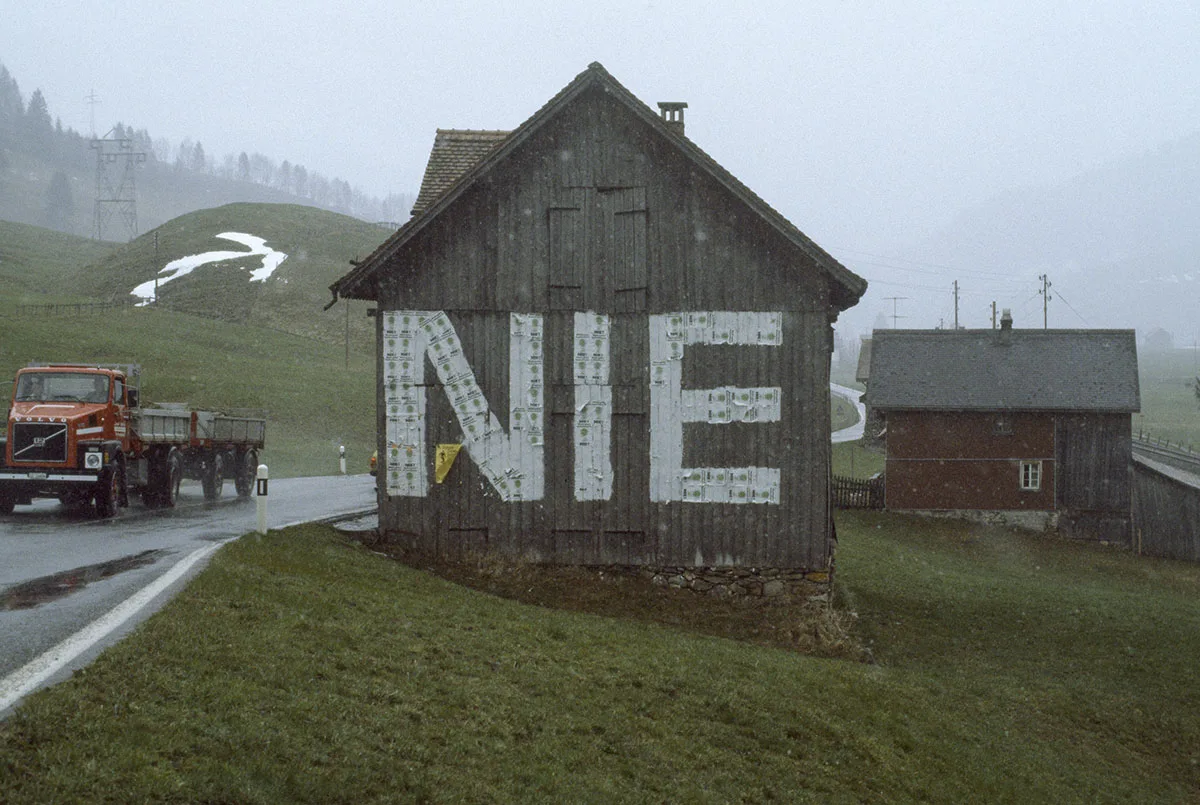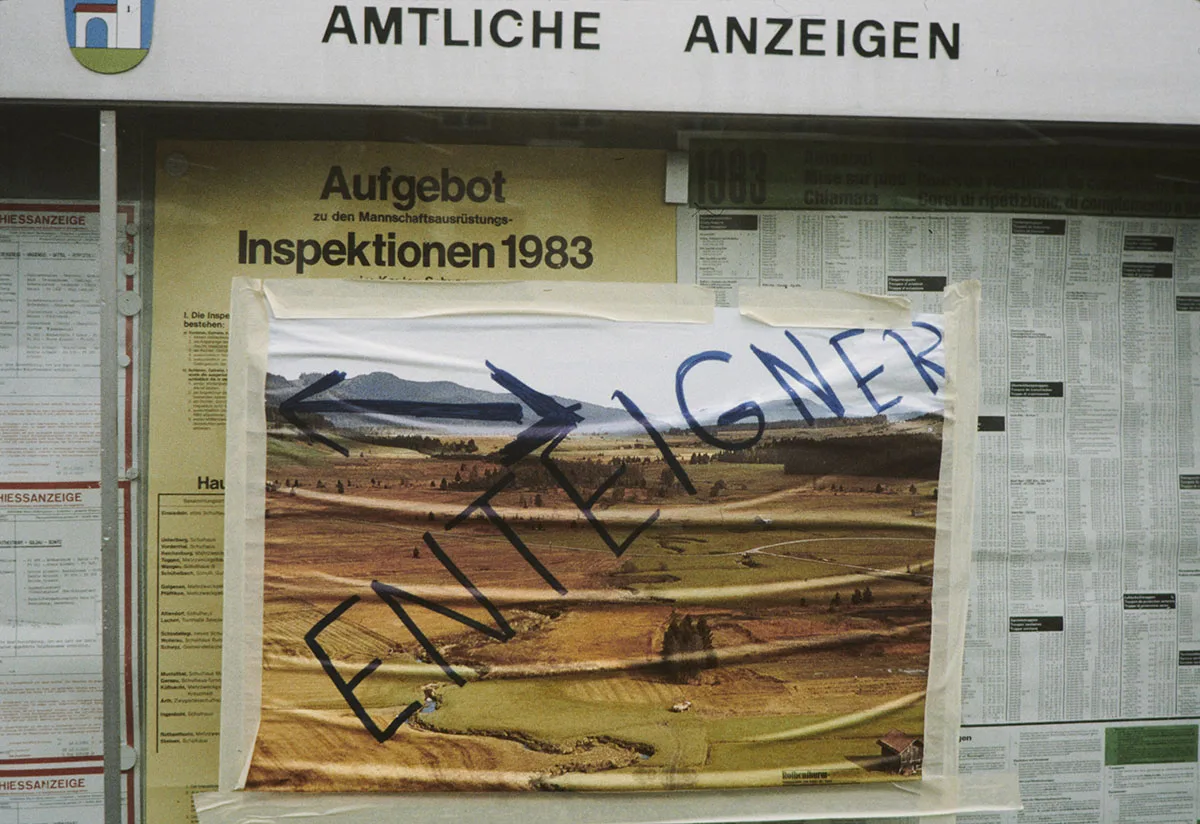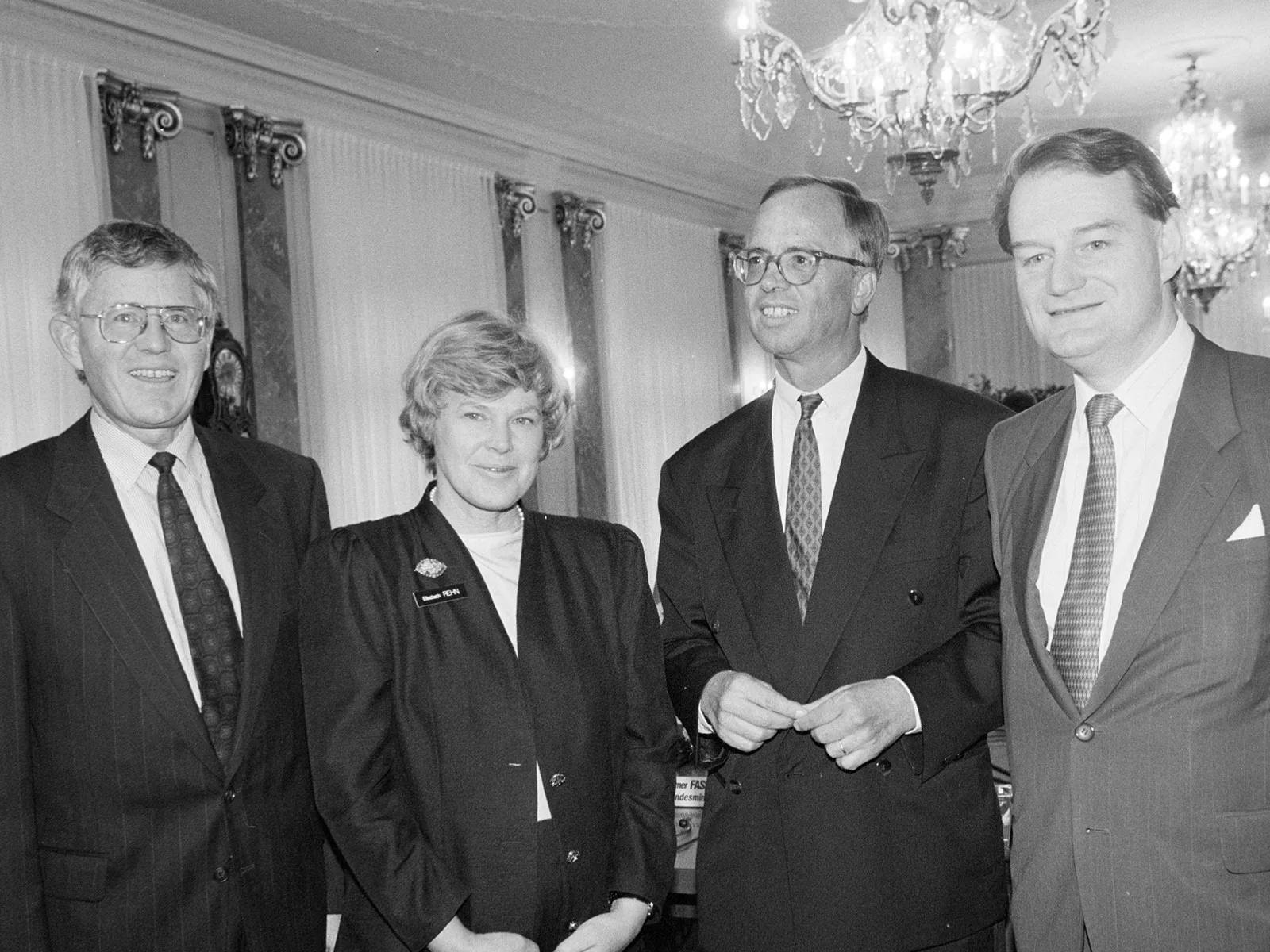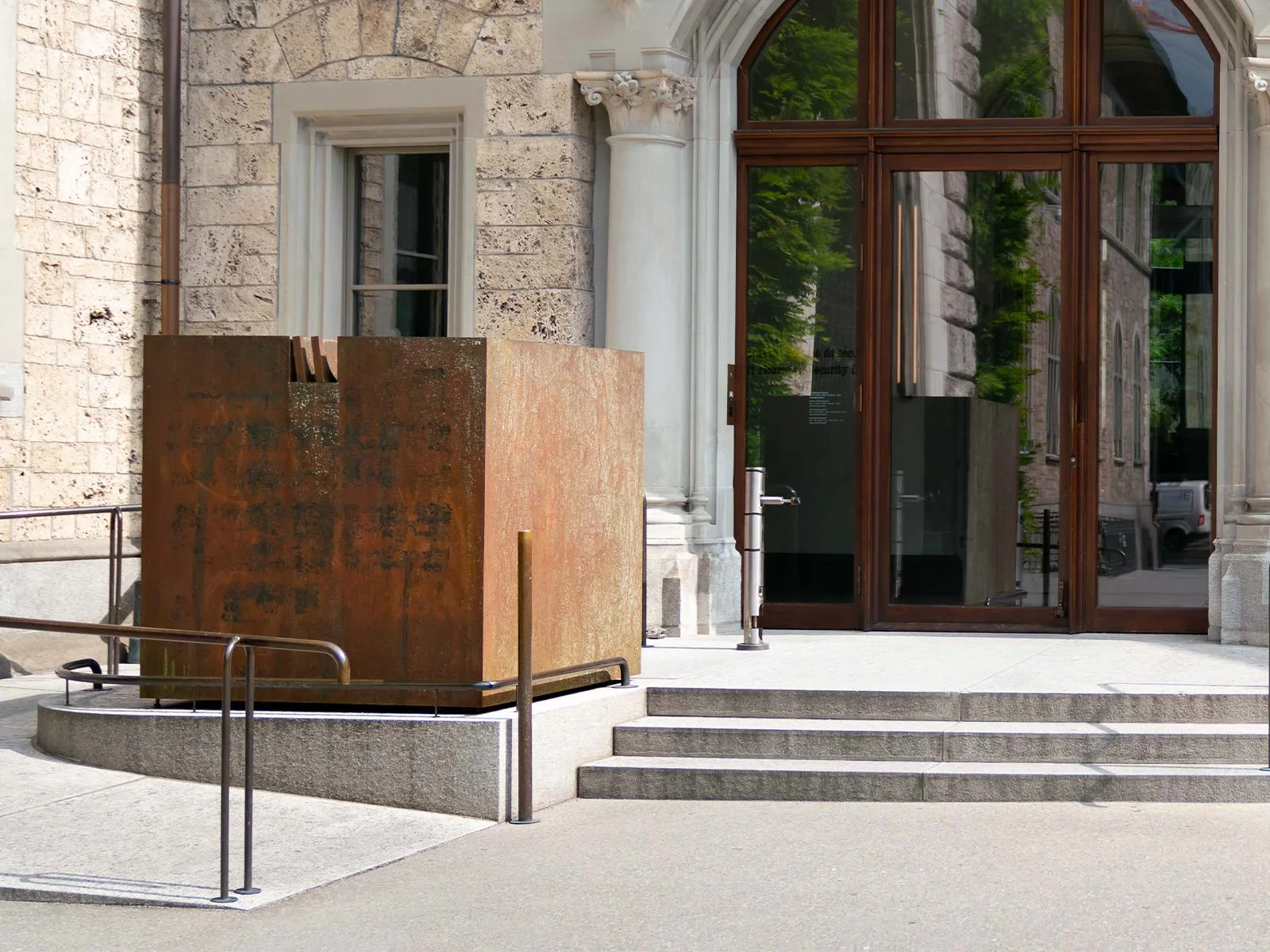
Swiss National Museum / ASL
Protected moorland instead of military training ground
There was a time before mobile phones, a time when press photographers were the eyes of an entire nation. Many of the images they captured are now forgotten. Among these are the images that served to illustrate the Rothenthurm initiative.
Everything in this picture seems to scream ‘No!’ The sodden conditions, the mist, the sleet – the weather could hardly be more inclement. The firmly shut windows and doors of the barn in the centre. And of course the three white capital letters pasted up in protest flyers: it’s not just ‘No’ that’s written here, but ‘NEVER’.
‘Never’ – the word refers to the Rothenthurm military training ground. In the early 1970s, the Swiss Army planned to establish a military training ground over ten square kilometres of upland moor near Rothenthurm (Canton of Schwyz). Roads for military vehicles, artificial hills, bridges – this training area, already drawn on plans, pitted the local population head to head against the Federal Military Department. For the land-owning farmers, it was nothing less than a battle for existence: for their farms, land and homes. But resistance was also prompted by concerns about shooting noise and safety.

The barn as a protest symbol.
Swiss National Museum / ASL
When the farmers couldn’t be persuaded with money to sell their land, Georges-André Chevallaz, head of the Military Department, launched an expropriation procedure. Sections of the population reacted with objections and motions before the Federal Supreme Court. In the end, however, it wasn’t the blockade that was the key to the opposition’s success; rather, it was the emergence of an alternative movement that was able to command a majority. Opposition to the military training ground became a signal of support for preserving nature. Working together with WWF Switzerland, in 1983 the farmers of Rothenthurm started the ‘Zum Schutz der Moore’ (Protecting our moorlands) initiative. This initiative proposed a ban on any modifications to moorland areas of ‘particular beauty and national importance’.
In the photo, which was taken in April 1983, when signatures were being collected for the initiative, there’s still a patch of snow on the hill on the left. The haphazardness of the spring melt has created a sweeping arrow. Pointing to the top right – in the direction of the future and advancement – it brightens up the sullen image a little. Like a shining signal light, it points onward past the ‘No’, as if trying to show an alternative route. Why is the truck going in the opposite direction? There is no unanimity. Especially in Rothenthurm, opinions differed widely. The village was split in two: from personal abuse to warning fires and the burning of military barracks, a volatile atmosphere hung over the village for quite some time.

Using the buzzword ‘Expropriators’, Rothenthurm farmers protested against the Federal Military Department.
Swiss National Museum / ASL
In December 1987, ballot boxes throughout Switzerland showed emphatically that the nature preservation argument had won over the nation’s voters. Although the Federal and National Councils and the Council of States were in favour of the military training ground – that is, opposed to the initiative – 57.8% of voters said ‘Yes’. Switzerland thus became the only country in the world to date to enshrine moorland protection in its constitution. Ultimately, just 2% of Switzerland’s national territory is affected. But nonetheless, in a figurative sense, this is also a form of national defence.
The press photo agency ASL
Actualités Suisses Lausanne (ASL) was founded by Roland Schlaefli in 1954, and until its closure in 1999 was the leading press photo agency in western Switzerland. In 1973, Schlaefli also took over the archive of Agentur Presse Diffusion Lausanne (PDL), founded in 1937. The holdings of the two agencies comprise approximately six million images (negatives, prints, slides). In the broad range of subjects covered, there is a focus on federal politics, sport and western Switzerland. The agency opted not to take the step into the digital age. Since 2007, the archives of ASL and PDL have been held by the Swiss National Museum. The blog presents, in a loose chronology, images and photo sequences that particularly stood out when the collections were being recatalogued.



